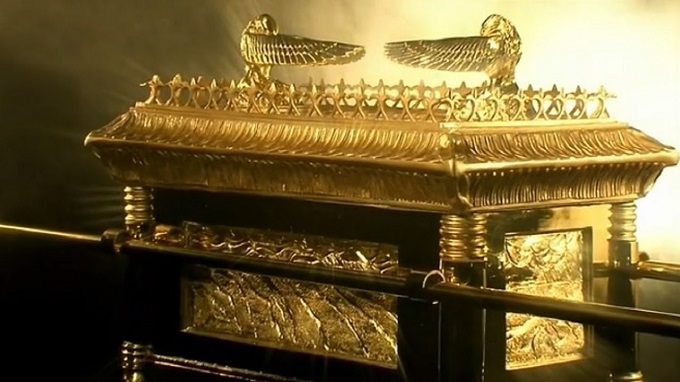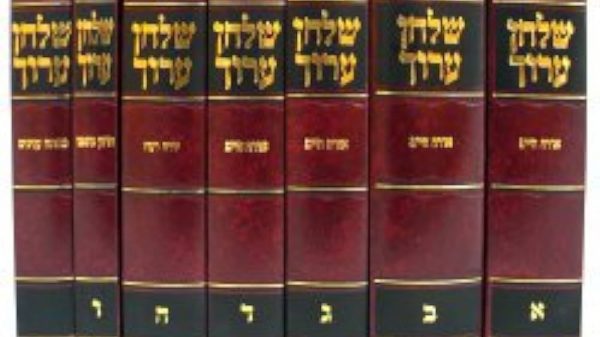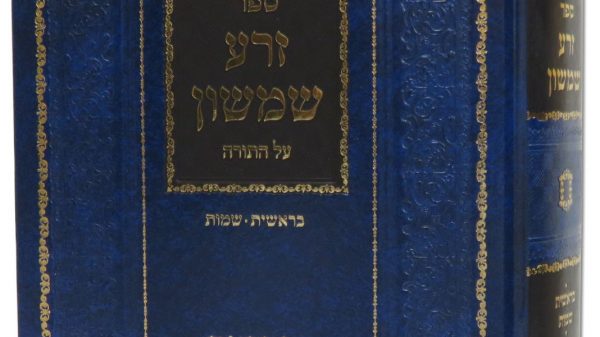Click here to download PDF
Contradiction in Rambam
In this week’s Parsha we have the directive to build the Mishkan and subsequently the Beis HaMikdash as the Pasuk says (25:8) “and they will make for me a “Mikdash”-sanctuary and I will dwell within them”. The Rambam brings this Pasuk as the eternal source for the command to build the Mishkan and the Beis HaMikdash both in his Sefer HaMizvos (aseh 20) and in Hilchos Beis HaBechirah (1:1)However, the Rambam contradicts himself in Hilchos Melachim (1:1) regarding the source of the obligation to build the Beis HaMikdash as he says there “ Three mitzvos Yisroel were commanded upon coming into the land of Israel to appoint a king as it says…. to obliterate the descendants of Amalek as it says… and to build the Beis HaBechirah as it says: “L’shichno– to His dwelling place you shall seek and come there”(Devarim 12:5)”. What is wrong with Pasuk from this week’s Parsha which the Rambam seemingly had said in two places in his works is the eternal source to build the Beis HaMikdash? What does this Pasuk add to the pre-existing obligation from the Pasuk in this week’s Parsha?Another question that needs unraveling is what is the inherent connection between these three mitzvos of appointing a king, obliterating Amalek, and building the Beis HaMikdash?
Rambam vs Ramban
The Rambam in the 12th “shoresh”- principle of his monumental introduction to his sefer Hamitzvos explains his position that the detailed instructions to construct the vessels of the Mishkan should not be counted as a separate mitzvos in the count of the 613 Mitzvos. For instance: The making of the Aron, the making of the Mizbeach, or any of the other vessels. Rather, all of those instructions are all implicit in one single mitzvah of “and they will make me a Mikdash..”. The Ramban in his “Hasagos”-critique of the sefer HaMitzvos is willing to accept the Rambam’s position that not every instructed construction should be counted as a separate Mitzvah however he takes issue with the Rambam making it all implicit in the Mitzvah of building the house itself. The Ramban says it would have been more logical to make the making of the vessels implicit in the Mitzvah that is performed with them, which the Rambam indeed counts as separate Mitzvos. For example: The building of The Mizbeach should be implicit in the many positive commandments for the sacrifices that need to be offered on it. The making of the menorah should be implicit in the positive commandment of lighting the menorah etc. Seemingly it is more logical to consider the obligation of making the vessels implicit in the positive commandments that are performed with those vessels. How do we understand the position of the Rambam?
Mikdash vs Mishkan
There is a duality in the Mishkan and subsequently in the Beis HaMikdash. This duality is reflected by the two terms that they are known by “Mikdash”– a holy place where we can do “Kodshim”-the holy service of offering Korbanos and “Mishkan” – a place of dwelling for the Divine presence. We could raise the following “Chakira”- inquiry: is it a “Mikdash”- place designated to do “Avodas HaKorbanos”-the sacrificial order and as a result the “Shechina” will be revealed and dwell there or is it a “Mishkan”–place for the “Shechina” to dwell and at that place we may do our “Korbanos”? The words of the Rambam on this issue are very clear in the beginning of Hilchos Beis HaBechira 91:!) he stresses “It is a positive commandment to build a house for Hashem designated to offering the sacrifices….as it says, “and they will make me a Mikdash..”. In the sefer HaMitzvos (aseh 20) “ We were commanded to make a house of “Avoda”-service in it will be the sacrificing …… as it says, “and they will make me a Mikdash..”. and we already explained that this principle includes all the components the Menorah the Shulchan the Mizbeach and the others. All are parts of the “Mikdash”, and all are called ‘Mikdash’ ” The Ramban in his commentary in the beginning of this week’s Parsha says the exact opposite! The goal of the Mishkan was to put the Divine presence amongst us! He explains that the reason the first thing that Hashem commanded us to make this week’s Parsha was the Aron is because that is where the “Shechina” dwells as a result of the Luchos and the Torah and that is the goal. That’s why it’s mentioned first (see there). This “Mishkan”- is literally a place or the Shechina and over there we are also authorized to do the “Korbanos”
Rambam & Ramban “L’shitasam”
With this we could understand the positions of the Rambam and the Ramban regarding which Mitzvah obligates us to make the vessels of the Mishkan/Beis HaMikdash. According to the Ramban the “Mishkan” is a place of the “Shechina” and the vessels are for “Avoda” and therefore he cannot see why the mitzva of making the house obligate us to make the vessels. Therefore, he is of the position that the obligations to make the vessels which are for the purpose of “Avoda” are actually the Mitzvos of “Avoda” done with them. The Rambam understands that the Mitzva of building the “Mikdash” is to make a place of “Avoda” and therefore it is also the obligation to make the vessels used for “Avoda”!
Har HaMoriah
However, the Rambam said that regarding the aspect of “Mikdash” that we were commanded at the time of the desert, which never expires. However, the Beis HaMikdash in Yerushalayim has an added dimension! Throughout the Chumash the Torah speaks of “the place that Hashem will choose” implying that the designated place for the “Beis Olamim”- the eternal place of the Beis HaMikdash had not been chosen yet. However, the Rambam in the Moreh Nevuchim (3:45) says that that’s not the case. Har Hamoriah was already consecrated by Avraham avinu at the time of Akeidas Yitzchak as “the mountain where Hashem will be seen”. The Rambam explains that the reason that this information was withheld from the people in the time of Moshe (Moshe Rabbeinu knew about Har Hamoriah – but wasn’t allowed to reveal) was that the tribes should not fight over yerushalayim and Har Hamoriah when they come into the land of Israel! The TRUE place where “Hashem will be seen” i.e. place of the “Shechina” was meant to be Har Hamoriah -even at the time we were commanded to build the Mishkan in the desert! The revelation of the “Shechina” in the Mishkan in the desert, like the giving of Torah on Har Sinai which was the greatest revelation of all time, was just on a temporary basis – the designated place of the “Shechina” is in the land of Israel on Har Hamoriah!
Two Dinim in Building the “Beis Olamim”
According to the Rambam it comes out that from the time of the desert we were commanded to make a place to offer the sacrifices. That obligation is standing and never ceased! Upon coming to the land of Israel an additional obligation sets in to seek the real designated home of the “shechina”.This is so apparent from the nuances of the Pesukim. In this week’s Parsha we are commanded to build the Mishkan in the desert. The desert is not naturally habitable space. The “Shechina” being revealed in the desert is not called that the “Shechina” has found its place on Earth! Therefore, this week’s Parsha says: “and they will make me a “Mikdash” and I will dwell in them” The famous inference is “it doesn’t say “B’tocho”- in it, but rather “B’tocham”- in them. According to the Rambam that is indeed the case prior to the construction of the Beis HaMikdash in the real designated place of the “Shechina”. The “Shechina” is perpetually connected to the Jewish people and follows us everywhere- even in golus! However, that’s called that the “Shechina” is not in its designated place on earth. Contrast that with the pasuk that the Rambam brings at the beginning of Hilchos Melachim “L’Shichno – to His dwelling-place seek…” the command is to seek the place which is really the dwelling of the Divine Presence. This is the added element of obligation that sets in when we enter the land of Israel – to seek the actual Dwelling place of the “Shechina” in addition to its eternal connection to the Jewish people as a people
Malchus
This captures the unique function of Eretz Israel – the place within habitable earth for the “Shechina”! With this we could understand the common denominator between the three Mitzvahs that we are commanded upon entering the land of Israel: To appoint a king. We are taught that the attribute called “Malchus” is a synonym for the attribute called “Shechina” because our Kings represent Hashem’s Kingdom on Earth, so our having a king is a form of “Shechina” on Earth. By no coincidence the king builds the Beis HaMikdash. Dovid HaMelech wanted to do it so badly, Shlomo HaMelech did it, and our eternal third Beis HaMikdash, according to the Rambam, will be built by Melech Hamoshiach.
Amalek
The one who obscures the Kingdom of Heaven on Earth is Amalek. Chazal teach us based on the pesukim in parshas Beshalach that Hashem’s Throne is not complete, and His Name is not complete until Amalek is obliterated. Amalek comes to block the revelation of Hashem on Earth and that’s why he is the arch enemy of the Jewish people who want to bring the “Shechina” to Earth. Coming to the land of Israel to bring the “Shechina” to earth goes hand-in-hand with the obligation to appoint a King, the obligation to rid the world of Amalek who would block revelation of “Shechina” on Earth. This also opens up another dimension of the Beis HaMikdash and activates the obligation of seeking its true home on Earth.
Adar – Building the Potential
The difference between Adar and Nissan is potential vs actual. In Adar we had a Renaissance within the exile that paved the way for the rebuilding of Beis HaMikdash and coming back under the leadership of Ezra. By no coincidence these two months are right next to each other. Nissan is the month where we were actually redeemed and taken out from exile and in the following year it was a month for the Mishkan was actually erected and is also the Rosh Hashanah for counting the years of our Jewish Kings. Adar is the month that prepares for that renewal while still within exile, living with hidden Miracles, before everything breaks out into total revelation. Adar provides the potential for all of the actuality that is to emerge. Adar is parallel to the building up of the Mishkan (=potential) that we read about during the month of Adar, prior to its actual erection in Nissan. The first week of Adar is always parshas Terumah. The Mishkan is a representation of the Divine presence in our midst even when we have not yet reached our proper place in the world. The Mishkan was built in the desert which was not our designated Homeland and not the Homeland of the “Shechina” because the Divine presence sticks with the Jewish people even if they’re in exile. The lesson of the miracle of Purim is the potential to have the Divine presence with us, to have Kingdom with us, and as a result to have a little bit of obliteration of Amalek even while in exile! Chazal tell us: Every time it says “Melech”-king in Megilas Esther it refers to THE KING – Hashem! Even though we didn’t have a regular King in the flesh , we had Esther the queen. “On the third day Esther adorned herself with Malchus” the gemara says she adorned herself with “Ruach hakodesh” which means she became a vehicle for the actual Divine attribute of “Malchus” which is a branch of the “Shechina”. Therefore, it was she that said “go gather all the Jews…” the Maharal explains that with that we that awakened our sense of nationhood of being one United Nation even within the exile! As a nation we are under Hashem alone and that brought out the power of the “Shechina” that’s with us at all times. There was a taste of the rebuilding of the Beis Hamikdash even in that time! Seven advisers appeared before Achasveirosh which led to vashti being disposed and Esther being put in her place. Chazal say their names allude to the Korbonos! By no coincidence Achashveirosh used the vessels of the Beis HaMikdash and Bigdei Kehuna at that feast and Hashem turned it around on him that vashti got in trouble and Esther took her place – that was the beginning of the reclaiming and liberation of the Beis HaMikdash, the beginning of the liberation of the attribute of “Malchus”, the beginning of revealing the “Shechina” in the midst of the Jewish people in exile and subsequently returning them to their rightful place in Eretz Israel. The month of Adar and Purim build up all the potential for all the actuality that is to be revealed speedily in our days!










